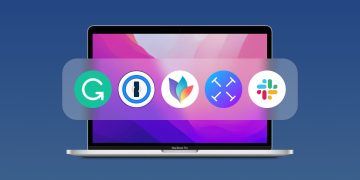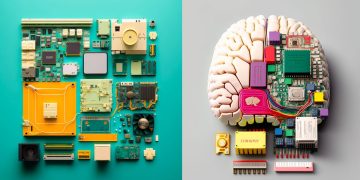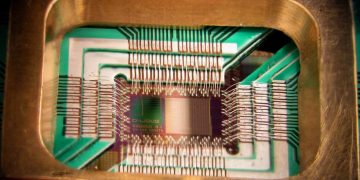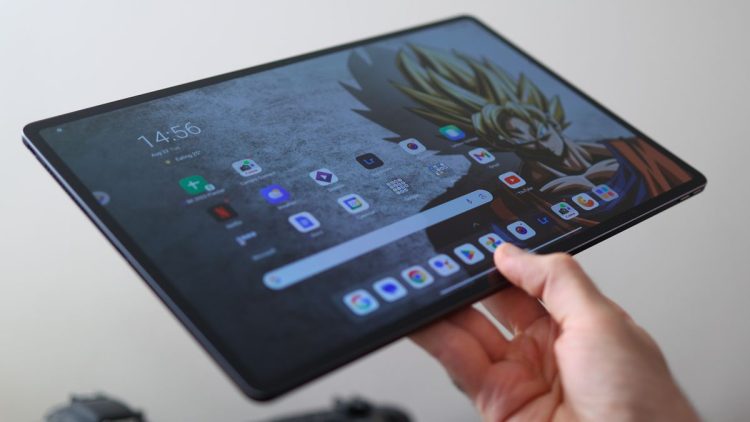Introduction: The Growing Capabilities of Smartphones and Whether They Can Replace Traditional Laptops for Most Users
Over the past decade, smartphones have evolved from simple communication tools into powerful, multifaceted devices that are integral to nearly every aspect of modern life. With their high-performance processors, vibrant displays, advanced cameras, and an ever-expanding range of mobile apps, smartphones have become an essential part of our daily routines. But as the capabilities of smartphones continue to grow, one question arises: Can a smartphone ever replace a traditional laptop?
While laptops are still widely used for tasks that require significant computing power, such as video editing, software development, or running complex applications, smartphones are quickly closing the gap. The rise of mobile-first services, cloud computing, and advancements in mobile hardware suggests that for many people, smartphones could potentially serve as the primary computing device, negating the need for a laptop. But are we truly at a point where smartphones can replace laptops, or are there still fundamental limitations that need to be overcome?
In this article, we will explore the growing capabilities of smartphones, their potential to replace laptops, the limitations that still exist, and the role that emerging technologies like 5G and foldable smartphones could play in reshaping the mobile computing landscape. By examining these factors, we can gain a clearer understanding of whether smartphones are truly capable of replacing laptops in the near future.
Current Smartphone Capabilities: Processing Power, Mobile Apps, Cloud Integration, and Productivity Tools
Smartphones are no longer just for checking emails or scrolling through social media. The performance and capabilities of modern smartphones rival that of older laptops and desktops. This shift has been driven by continuous advancements in mobile processing power, storage capacity, and software optimization. Here are a few key aspects that highlight how smartphones have become increasingly capable of performing tasks traditionally reserved for laptops:
- Processing Power: Today’s smartphones are powered by processors that rival those found in mid-range laptops. Apple’s A-series chips, for example, and Qualcomm’s Snapdragon processors provide incredible computing power, enabling smartphones to run high-performance applications, multi-task effectively, and even handle tasks like video editing and gaming. The introduction of ARM-based chips for mobile devices has significantly improved processing power while maintaining efficiency, allowing smartphones to perform complex tasks that were once exclusive to laptops.
- Mobile Apps: The vast ecosystem of mobile apps has transformed smartphones into versatile productivity tools. Users can perform tasks such as document editing, video conferencing, project management, and creative work using apps that are optimized for mobile devices. Cloud-based productivity apps like Google Docs, Microsoft Office 365, and various project management tools offer users the ability to create, edit, and share documents on the go. Meanwhile, advanced creative apps such as Adobe Photoshop Express and mobile video editing software like LumaFusion have made smartphones a viable alternative for professional work in certain fields.
- Cloud Integration: Cloud technology has played a significant role in reducing the dependence on local computing power. With the ability to access documents, files, and applications stored remotely, smartphones can effectively serve as a thin client, relying on cloud-based services to perform heavy computational tasks. Cloud computing platforms like Google Drive, OneDrive, and iCloud allow users to store and access files seamlessly across devices, making smartphones a practical choice for those who need access to work from anywhere without carrying a laptop.
- Productivity Tools: Many smartphones come preloaded with productivity tools, and an increasing number of apps are designed specifically to enhance mobile productivity. From email management apps to calendar integrations, task trackers, and note-taking apps, smartphones are becoming more adept at handling the type of daily administrative and creative tasks that would have once required a laptop. Moreover, recent developments in mobile keyboard attachments and dock stations are making typing and multitasking easier, further extending smartphones’ capabilities as productivity devices.
Limitations: Screen Size, Multitasking Efficiency, Keyboard Input, and the Need for Powerful Hardware for Certain Tasks
Despite their impressive capabilities, smartphones still face several limitations when compared to laptops, particularly in tasks that require intensive processing power or efficient multitasking. The following challenges must be addressed for smartphones to fully replace laptops for all users:
- Screen Size: The most obvious limitation of smartphones is the screen size. While smartphones feature large, high-resolution displays, they are still much smaller than laptop screens, making them less ideal for tasks that require significant screen real estate, such as complex data analysis, content creation, or gaming. Many people also prefer the larger screen of a laptop for reading, writing, or multi-window multitasking. The small screen size of smartphones also makes them less comfortable for extended work sessions, as users may experience eye strain or discomfort when viewing content for long periods.
- Multitasking Efficiency: While modern smartphones have improved multitasking capabilities, they are still limited when compared to laptops. On a laptop, users can effortlessly switch between multiple applications and work in parallel across several windows. In contrast, smartphones are typically limited to one or two apps running at the same time, making it harder to manage complex workflows. Some multitasking features, like split-screen mode, exist on smartphones, but they still cannot replicate the ease of managing several open windows or desktop-sized applications at once. This limitation is particularly noticeable for power users who rely on desktop software to juggle multiple tasks simultaneously.
- Keyboard Input: While smartphone touchscreens have become increasingly precise, typing on a small, flat surface is still less efficient than using a traditional physical keyboard. Although external keyboards can be connected to smartphones via Bluetooth or docking stations, the typing experience still falls short of the comfort and efficiency provided by a full-sized laptop keyboard. Many users find typing long documents, composing emails, or writing code on a smartphone cumbersome and inefficient, which can make it difficult to use smartphones for work that requires extended typing sessions.
- Need for Powerful Hardware for Certain Tasks: Despite the impressive processing power of modern smartphones, there are still tasks that require much more hardware-intensive computing than smartphones can currently provide. For example, professional video editing, 3D rendering, and gaming at the highest settings demand powerful GPUs, more storage, and robust cooling systems—all of which are difficult to achieve within the confines of a smartphone. Similarly, certain professional applications such as large-scale data analysis, software development, and database management are still better suited for laptops or desktops that are optimized for those tasks.

The Role of 5G: How the Advent of 5G Technology Will Improve Mobile Computing
One of the most exciting developments for mobile computing is the rollout of 5G technology. This next generation of wireless technology promises to drastically improve internet speeds, reduce latency, and enable better connectivity for mobile devices. For smartphones, this means a host of new opportunities:
- Faster Connectivity: 5G is expected to deliver download speeds up to 100 times faster than 4G, making it possible for smartphones to handle large data transfers and cloud-based applications with ease. This speed increase will allow users to access remote servers, stream high-quality media, and download large files without significant delays. As a result, smartphones will be even more capable of handling resource-intensive tasks that previously required a laptop’s processing power.
- Low Latency for Real-Time Collaboration: With lower latency, 5G will enhance real-time collaboration and cloud-based computing. Video conferencing, remote desktop applications, and collaborative work tools will function more smoothly, allowing users to perform tasks like remote meetings, editing documents simultaneously, or participating in virtual team activities, all from a mobile device.
- Cloud Gaming and Streaming: One area where 5G will make a significant impact is cloud gaming. As the demand for mobile gaming grows, the high-speed connectivity of 5G will allow users to play resource-intensive games without the need for high-end hardware. Mobile gamers will be able to stream AAA games directly to their smartphones, similar to how cloud gaming services like Google Stadia and NVIDIA GeForce Now currently work, but with significantly improved performance due to the enhanced speeds and reduced latency offered by 5G.
Future Trends: Potential for Foldable or Modular Smartphones, More Advanced AI Capabilities, and Mobile-Driven Productivity Apps
The future of smartphones holds exciting possibilities that could push them even closer to replacing laptops in daily use. Some of the most promising trends include:
- Foldable or Modular Smartphones: Foldable smartphones are already pushing the boundaries of mobile form factors. With the ability to fold into a compact form when not in use and unfold into a larger display when needed, foldable smartphones could offer the best of both worlds: portability and productivity. Future advancements in this technology could lead to larger, more versatile foldable phones with screens that rival those of laptops, enabling users to work, watch media, and game on a much larger canvas while still maintaining the portability of a smartphone.
- More Advanced AI Capabilities: Artificial intelligence (AI) will play a central role in the evolution of smartphones. With the integration of advanced AI tools, smartphones will become more intelligent, offering personalized experiences, optimized performance, and enhanced productivity features. AI could help smartphones better handle multitasking, improve battery life, and adapt to the user’s workflow, all while making the devices more intuitive to use.
- Mobile-Driven Productivity Apps: As cloud computing continues to evolve, we can expect an increasing number of sophisticated productivity apps to be optimized for mobile devices. These apps will allow users to create, edit, and collaborate on documents, manage projects, and run business operations directly from their smartphones. The integration of more robust cloud-based solutions will empower smartphones to handle complex workflows, reducing the need for laptops for office work and administrative tasks.
Conclusion: While Smartphones May Replace Laptops for Many People, Particularly Those Who Rely on Cloud-Based Services, Heavy-Duty Tasks May Still Require Traditional Computing Power for the Foreseeable Future
Smartphones have come a long way in terms of performance and functionality, and they are certainly capable of replacing laptops for many users, particularly those who rely on cloud-based services and basic productivity tools. The advancements in processing power, cloud integration, and mobile apps have made smartphones incredibly versatile and capable of handling tasks that were once confined to laptops and desktops.
However, despite these advancements, smartphones still face limitations in terms of screen size, multitasking efficiency, and hardware requirements for heavy-duty tasks. For users who require complex software applications, resource-intensive tasks, or long-term comfort in extended use, laptops will continue to be a vital part of the computing landscape.
As we move forward, the evolution of smartphones, powered by 5G technology, foldable displays, and AI advancements, will continue to close the gap between mobile devices and traditional computers. While smartphones may not completely replace laptops in the near future, they will likely become the primary device for many, offering the flexibility and convenience that modern users increasingly demand.
















































Discussion about this post